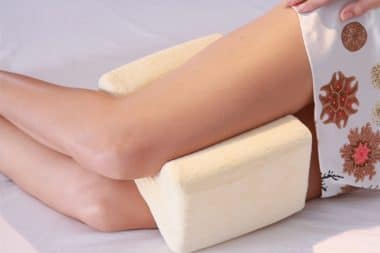Let’s face it, lower back pain is a fact of life, and you will find every other person suffering from it at some point in time. Strain in the lower back is one of the main reasons for chronic or acute back pain. Lower back pain means a series of ligaments and muscles in the lower back are strained when you stretch them too much, and is normally caused by extreme physical exertion, falls, repeated bending or crouching, and lifting heavy objects.
All these problems occur mainly when you are not in good physical shape. However, there are other kinds of back pain injuries where the reasons can be complex; these include muscle strains, sports injuries, and injuries sustained from accidents. Below we look at how to recover from back pain no matter the cause.
How to Diagnose Back Pain
Apart from a full physical examination and looking at the complete history of the problem, a doctor may suggest one of these diagnostic studies. X-rays can be used to check the bone structure details of the spine, usually for tumors, stability, and fractures. You may be asked to undergo a CT scan to identify specific conditions like spinal stenosis and herniated disc. MRI scans will provide more facts about the back discs, nerve roots etc. These MRI scans are usually used during pre-surgical preparation. There are many other electrical and imaging studies used for identifying back issues. Sometimes injections are also used for diagnosis as well as pain relief.
Back Pain and Bed Rest
Most people want to stay in their bed when their back is hurting. However, modern studies recommend that there is no reason to stay in bed for longer than 48 hours in most cases as it doesn’t help and sometimes may even delay the recovery. The best advice in case of back pain is moderation of your activities and staying active in a limited way. Research indicates that if you just find comfortable positions and continue to move, you will not need bed rest at all. However, it could well be that your mattress is contributing to the problem. If this is the case, you might want to look here to get the best mattress for back pain.
Tips for Handling Back Pain
You can often manage back pain yourself if your doctor advises that it is safe for you to do so. Here are some tips for handling back pain:
- Stop your normal physical activity for first few days. It will help you to calm the symptoms and decrease the swelling on the back.
- Apply ice or heat on the painful area. The ice can be used within the first 48 to 72 hours – after that, you can use heat. You may use over-the-counter pain killers like acetaminophen or ibuprofen too.
- Sleep in a curled-up position taking a pillow between your legs. When you are sleeping on your back, the pillow has to be placed under the knees to relieve pressure.
- Stay away from back twisting and heavy lifting for the first six weeks after the pain starts.
- Do not try to exercise during the days after the pain has started. Begin exercising 2 to 3 weeks after the injury, depending on the intensity of the pain. A therapist will teach you the right exercises.
Exercises for Preventing Back Pain in the Future
By doing the right exercise, you can improve your posture, lose weight, avoid falls, improve flexibility, and strengthen your abdomen and back muscles. If you get a proper exercise program from a doctor or a therapist, it will include aerobic activities such as swimming, walking, or riding a bicycle. It also usually includes strength training and stretching. Start with light cardiovascular training, walking, or riding. Swimming is also good exercise. These aerobic activities will improve blood flow to the back and will promote healing. They also strengthen the muscles in the back and stomach.
Stretching exercises are significant in the long run, but remember that these exercises if done too early after an injury will make your pain worsen. By strengthening the abdominal muscles, you can relieve the stress in the back. Your physical therapist will help in determining when to start strengthening and stretching exercises and how to perform them properly. However, keep in mind that you should avoid exercises such as jogging, racquet sports, contact sports, golf, weightlifting, dancing, leg lifts, and sit-ups.
Remember, it is a common myth that you are required to rest a lot and avoid activity for back pain -no doctor will recommend this. When there is no serious reason for the back pain like weakness, bladder or bowel control, fever, or weight loss, try to keep as active as you can. Otherwise, make an appointment with your doctor as soon as possible.








Reply